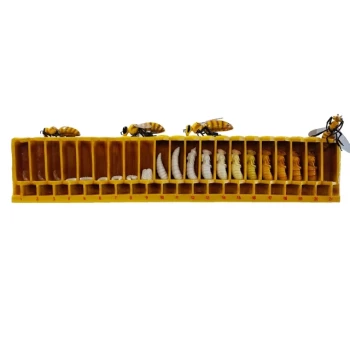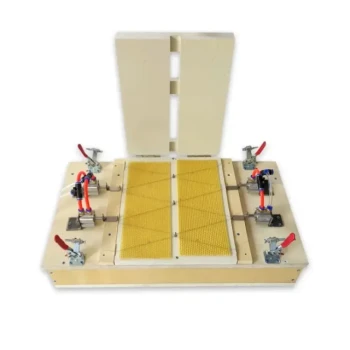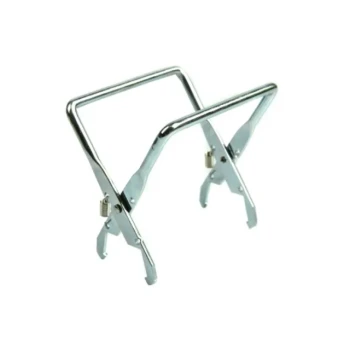Beeswax cappings are far more than a simple byproduct of honey extraction; they are the purest and most valuable wax a hive produces. Once drained of their residual honey, these cappings are typically melted down and recycled for two primary purposes: creating new beeswax foundation for hives or crafting high-quality candles. This process turns what would be waste into a valuable asset for the beekeeper.
After extracting honey, the beekeeper is left with a mixture of wax and honey. The true value lies in recognizing that these cappings are not waste, but rather the highest grade of wax available, ideal for creating pure, new products either for the apiary or for sale.
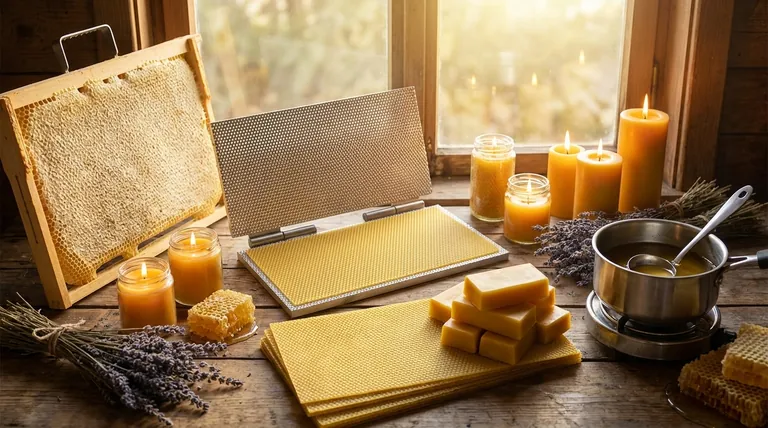
The Value of Capping Wax
Beeswax from cappings is distinct from wax sourced from old brood comb. Its unique properties make it a highly sought-after material.
The Purest Wax in the Hive
Capping wax is newly created by bees specifically to seal ripened honey. Because it has had minimal contact with the rest of the hive, it is remarkably clean and light in color. It is free from the accumulated propolis, pollen, and debris found in older combs, which darken and change the wax's properties over time.
The Critical First Step: Draining Honey
Before the wax can be used, the significant amount of honey trapped within the cappings must be recovered. Beekeepers typically place the cappings on a screen or in a specialized filter bag and let the honey drip out over 24-48 hours. This recovered honey is perfectly good for consumption.
The Second Step: Rendering into Blocks
After draining, the cappings are washed with water and then melted down. This process, known as rendering, separates the pure beeswax from any remaining impurities. The clean, liquid wax is then poured into molds to cool into solid, manageable blocks.
Primary Applications for Rendered Capping Wax
Once rendered into clean blocks, the uses for capping wax are diverse, serving both the apiary and external markets.
Creating New Beeswax Foundation
One of the most sustainable uses for capping wax is to press it into new foundation sheets. These sheets provide the structural guide for bees to build new comb inside the hive frames. Using wax from your own apiary creates a closed-loop system, reducing costs and minimizing the risk of introducing diseases from outside wax sources.
Crafting Premium Candles
The light color and delicate honey scent of capping wax make it the premier choice for candlemaking. Unlike paraffin, beeswax candles burn cleaner, brighter, and longer, without producing soot. Their natural, pleasant aroma makes them a premium product.
Use in Cosmetics and Salves
Due to its purity, capping wax is a perfect ingredient for DIY or commercial cosmetics. It serves as a natural emulsifier and thickener in products like lip balms, hand salves, lotions, and soaps, adding moisturizing and protective qualities.
Understanding the Trade-offs: Capping Wax vs. Brood Comb
Not all beeswax is created equal. The source of the wax within the hive dictates its best use.
Purity and Aesthetics
Capping wax is the gold standard for products where appearance and purity matter, like cosmetics or high-end candles. Old brood comb is much darker and retains a stronger, smokier scent from years of use, making it unsuitable for these applications without extensive filtering.
Suitability for Foundation
While capping wax makes beautiful, light-colored foundation, darker wax from brood comb is also perfectly functional for this purpose. Many beekeepers will blend wax from both sources when creating foundation to maximize their resources.
Choosing the Right Use for Your Wax
The best application for your rendered beeswax cappings depends entirely on your goals as a beekeeper or artisan.
- If your primary focus is apiary self-sufficiency: Prioritize using your rendered cappings to create new foundation sheets for your own hives.
- If your primary focus is generating revenue: Leverage the purity and pleasant aroma of capping wax to craft premium candles, lip balms, or food wraps for sale.
- If your primary focus is simplicity: Simply rendering the wax into clean, one-pound blocks makes it easy to store, sell, or trade with other beekeepers and craftspeople.
By properly rendering your cappings, you transform a simple byproduct into one of your most versatile and valuable hive resources.
Summary Table:
| Use Case | Key Benefit | Best Wax Type |
|---|---|---|
| Beeswax Foundation | Promotes hive health & self-sufficiency | Capping or Blended Wax |
| Premium Candles | Clean burn, natural honey scent | Pure Capping Wax |
| Cosmetics & Salves | High purity for skin-safe products | Pure Capping Wax |
| Selling/Trading | High-value, versatile raw material | Rendered Block Form |
Maximize the value of your apiary with HONESTBEE.
As a trusted supplier for commercial apiaries and beekeeping equipment distributors, we provide the high-quality supplies you need to efficiently process and utilize every resource from your hives—including beeswax cappings. From rendering equipment to foundation presses, our wholesale-focused operations ensure you get the reliable tools for sustainable beekeeping and product diversification.
Contact our team today to discuss your supply needs and learn how we can support your operation's growth and profitability.
Visual Guide
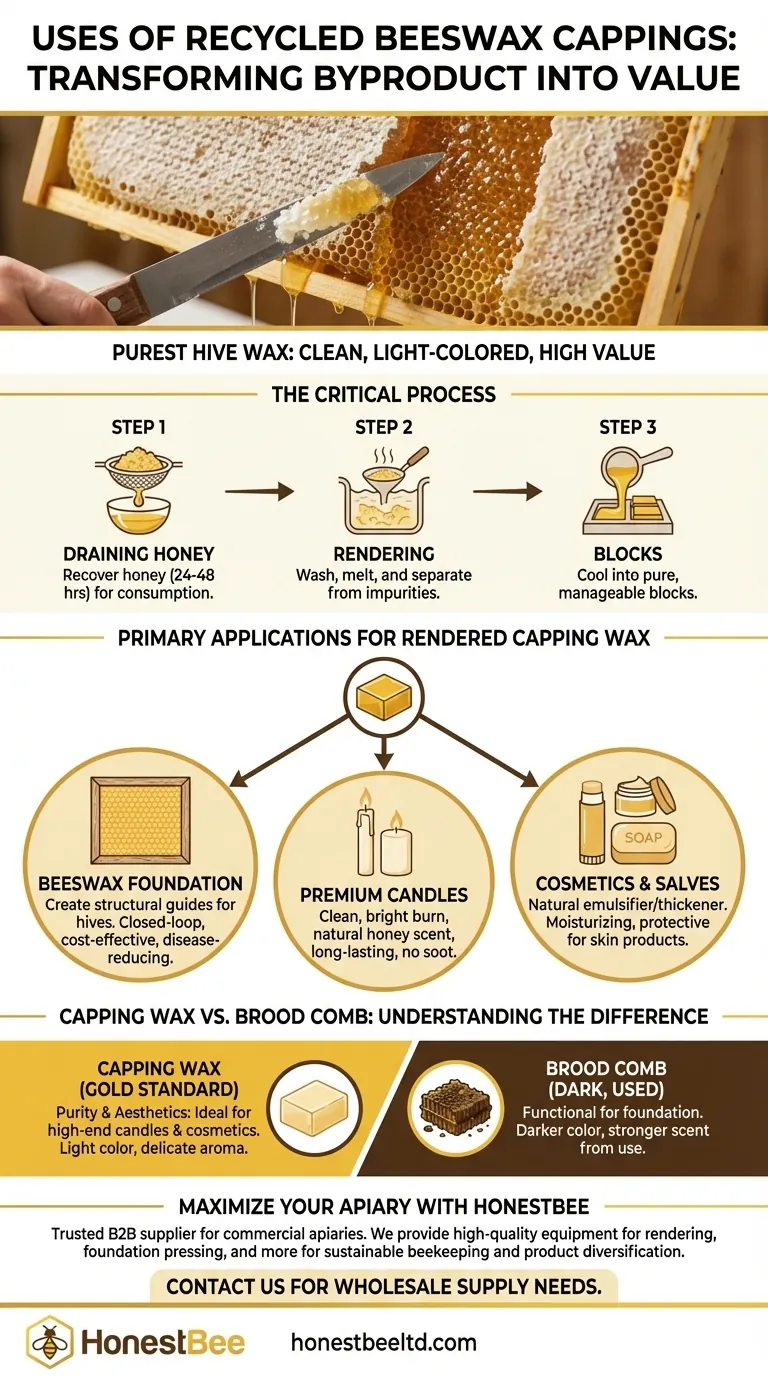
Related Products
- Notebook Style Beeswax Foundation Mould Wax Foundation Mold
- Manual Beeswax Comb Foundation Machine Wax Foundation Mill Embossing Machine
- Electric Beeswax Foundation Machine With Operating Tray and Wax Foundation Roller
- Electric Flatting and Embossing Machine with Tray for Beekeeping
- Electric Beeswax Flat Sheet Machine with Operating Tray for Wax Processing
People Also Ask
- How is beeswax foundation secured in wooden frames? Ensure Strong Comb for Healthy Hives
- What is the process for making beeswax sheets using a mold? A Step-by-Step Guide for Perfect Results
- How do you use the Foundation Mold to create beeswax foundation? Master DIY Beekeeping with Precision
- What is required when using wax foundation in beekeeping frames? Essential Support for Strong Combs
- Can beeswax foundation be recycled or reused? A Guide to Sustainable Beekeeping







